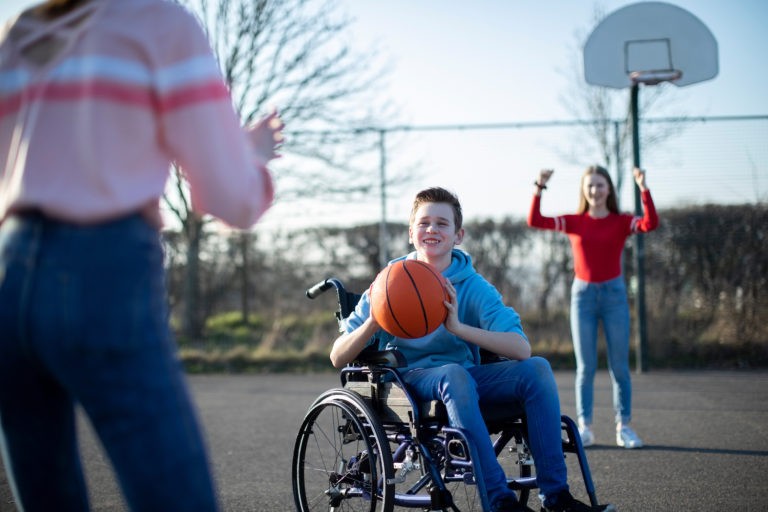As education continues to evolve, social-emotional learning, or SEL, is making a bold appearance. As educators, we are learning how to incorporate this into our curriculum and work it into our everyday routine and schedule. One major part of SEL is treating others the way we wish to be treated and to accept people for who they are. As a general education student, many have not acquired or learned about special needs students, and there are many misconceptions floating around as a result.
Misconceptions General Education Students Have About Special Needs Students
Many students in the general education population have misconceptions of special needs students or children with disabilities. Students many times feel that a student with special needs cannot really do many things. It is as simple as believing that special needs students cannot do the same things that students without disabilities can do. When a general education student sees a student in a wheelchair, many times they believe that special needs child “cannot do anything.” General education students tend to “feel bad” for these students and feel that those students cannot play with them. That’s why inclusive education is so important.
Another common misconception that general education students have about special needs students is that their disability is mentally and physically severe. A student may be physically handicapped, but not be mentally handicapped. Likewise, a mentally challenged student may be physically fine. There are so many different types of special needs a student may possess, and they range from communication needs to learning difficulties to emotionally disturbed to mentally disabled.
Many of these assumptions are based on the students limited set of experiences, and that is of no fault of their own. There is no negative or demeaning connotation to the misconceptions, it is just simply a lack of experience and a lack of education on the topic.
The Benefits of Inclusivity and Play
There is a major focus on social-emotional learning in schools. Character education is no longer taking a backseat to mathematics and language arts, and many schools, including mine, are building time for social-emotional learning into the daily schedule. So often the focus is on test scores and tested areas in academics that as educators we overlook the most important type of learning there is, and that is learning how to be a person with character.
You may be wondering why play is important. Inclusivity and play create a social connection for the special needs students. General education students are assigned a buddy and then they go play! This is a great experience for not just the special needs student, but for the general education student as well.
This type of activity can improve the confidence levels for a special needs student and in turn increase their academic achievement. It might be what makes the special needs student want to come to school each day to see his/her buddy and learn from a new friend. It teaches the special needs student that he/she can do anything that he/she puts his/her mind to. It teaches the general education student patience, kindness, humility, and acceptance. There are so many valuable learning experiences that can take place on each side of this experience.
The general education students also gain more knowledge of special needs children which may help to change their perspective or any misconceptions they possess. As mentioned above, many misconceptions are due to lack of experience and lack of knowledge, and inclusivity and play provides both to the general education student. This type of activity gives the student this new perspective and teaches them to not judge a book by its cover.
How General Education and Special Needs Students Can Play Together
There are many different ways for general education and special needs students to play together. Whatever the activity is, it is important for all students to be actively engaged in it. Routines are also important so there are specific days and/or times for this type of inclusivity and play to take place. If the normal routine is to go outside and play on the playground, it is important to have a back-up plan if the weather doesn’t cooperate or the playground is simply unavailable.
General education students need to be made aware of the physical or mental limitations that their buddy may possess. This will help the general education student understand how to handle certain situations that may arise and give them the ability to avoid certain types of play activities that a special needs student may not be able to participate in.
Inclusion playgrounds that are created by Inclusion Matters give opportunities for the students to simply spend time and play together. They offer programs to educate the teachers and general education students on ways to play and how to include special needs students in all different types of activities.
The real world is an inclusive world and programs such as these give students, general education and special needs, many different life skills that will help them to be successful. Life is not always fair and equal, and it is important for all students to learn how to deal with adversity and cope with challenges that may arise. I love the quote from Verna Myers: “Diversity is being invited to the party; inclusion is being asked to dance.” Just being in the same room does not create inclusion, but being involved does. Social-emotional learning is a key to success in the real world for our students, general and special needs alike.




